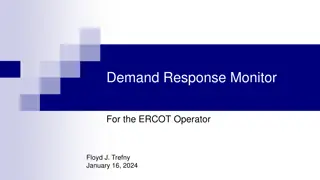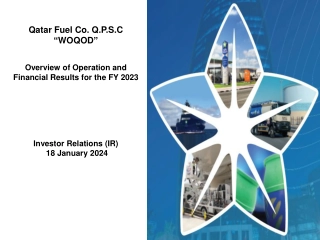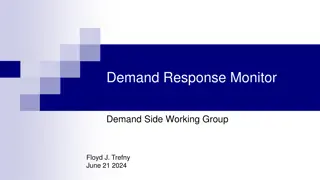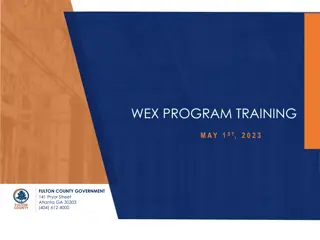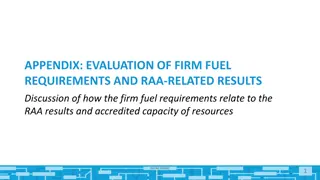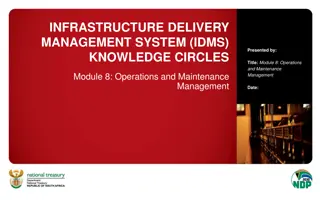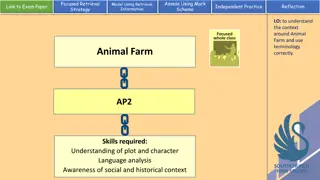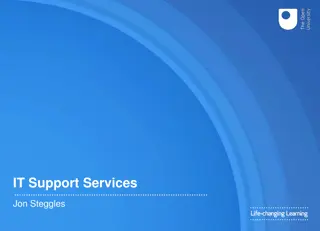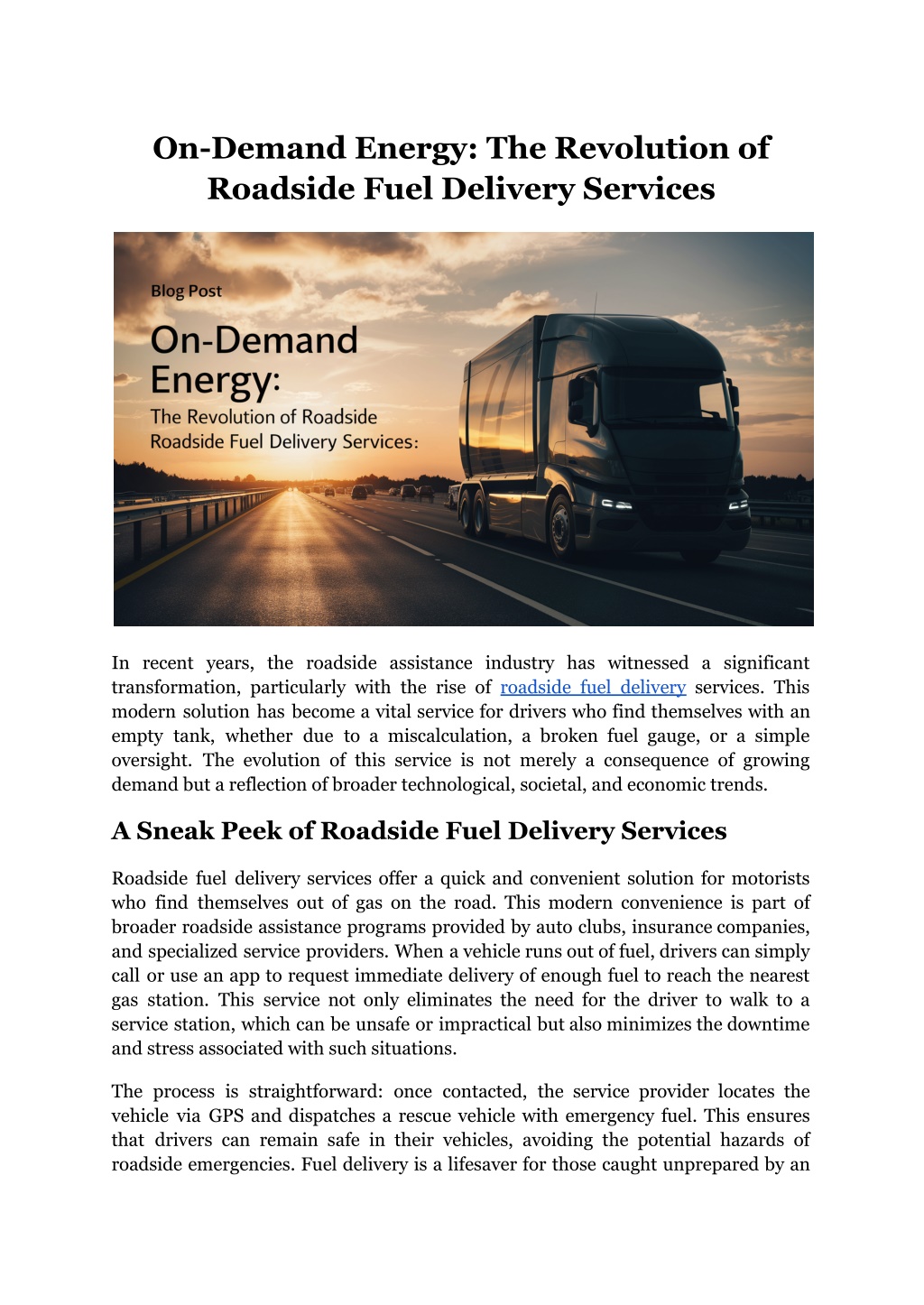
On-Demand Energy_ The Revolution of Roadside Fuel Delivery Services
In recent years, the roadside assistance industry has witnessed a significantntransformation, particularly with the rise of roadside fuel delivery services. Thisnmodern solution has become a vital service for drivers who find themselves with annempty tank, whether due to a miscalculation, a broken fuel gauge, or a simplenoversight. The evolution of this service is not merely a consequence of growingndemand but a reflection of broader technological, societal, and economic trends.
Download Presentation
Please find below an Image/Link to download the presentation.
The content on the website is provided AS IS for your information and personal use only. It may not be sold, licensed, or shared on other websites without obtaining consent from the author. Download presentation by click this link. If you encounter any issues during the download, it is possible that the publisher has removed the file from their server.
Presentation Transcript
On-Demand Energy: The Revolution of Roadside Fuel Delivery Services In recent years, the roadside assistance industry has witnessed a significant transformation, particularly with the rise of roadside fuel delivery services. This modern solution has become a vital service for drivers who find themselves with an empty tank, whether due to a miscalculation, a broken fuel gauge, or a simple oversight. The evolution of this service is not merely a consequence of growing demand but a reflection of broader technological, societal, and economic trends. A Sneak Peek of Roadside Fuel Delivery Services Roadside fuel delivery services offer a quick and convenient solution for motorists who find themselves out of gas on the road. This modern convenience is part of broader roadside assistance programs provided by auto clubs, insurance companies, and specialized service providers. When a vehicle runs out of fuel, drivers can simply call or use an app to request immediate delivery of enough fuel to reach the nearest gas station. This service not only eliminates the need for the driver to walk to a service station, which can be unsafe or impractical but also minimizes the downtime and stress associated with such situations. The process is straightforward: once contacted, the service provider locates the vehicle via GPS and dispatches a rescue vehicle with emergency fuel. This ensures that drivers can remain safe in their vehicles, avoiding the potential hazards of roadside emergencies. Fuel delivery is a lifesaver for those caught unprepared by an
empty tank, particularly in remote areas or during adverse weather conditions, and it underscores the evolving nature of roadside assistance in catering to the needs of modern drivers. Read More Articles: What is the difference between site mix and ready mix concrete 7 Factors That Led to the Revolution of Roadside Fuel Delivery Services 1. Technological Advancements The most significant driver of change in fuel delivery has been the rapid advancement of technology. GPS technology, mobile connectivity, and sophisticated logistics software have dramatically enhanced the efficiency of dispatching fuel delivery services. Service providers can now use real-time data to pinpoint a driver s exact location, predict the fastest route for delivery, and provide accurate ETAs. This technology not only speeds up the response time but also improves the overall customer experience by reducing the stress and uncertainty associated with running out of fuel. Moreover, the integration of mobile applications in the service process has streamlined the way drivers request help. With just a few taps on a smartphone, motorists can access fuel delivery services, pay electronically, and track the service vehicle s arrival. This convenience is powered by cloud computing and robust data analytics platforms that manage the logistical challenges of such services seamlessly. 2. Changes in Consumer Behavior Modern consumers, especially millennials and Gen Z, show a strong preference for services that offer convenience, speed, and reliability. This shift in consumer behavior has played a crucial role in shaping roadside assistance services, including fuel delivery. The expectation for on-demand services, influenced by the ubiquity of apps like Uber and Amazon, has conditioned consumers to expect immediate solutions to their problems, including those encountered on the road. This demand for instantaneity has pressured service providers to innovate continually and ensure that their offerings align with the expectations of a service-oriented generation. As a result, roadside fuel delivery has evolved from a simple service into a sophisticated, customer-centric solution that emphasizes minimal disruption and maximum efficiency.
3. Increased Vehicle Usage and Road Traffic The rise in vehicle ownership and the consequent increase in road traffic have naturally led to a higher incidence of fuel-related issues among motorists. As more people rely on personal transportation for commuting and travel, the likelihood of encountering fuel emergencies increases. This trend has been particularly noticeable in sprawling urban areas and in countries with expanding suburban and rural road networks. In response, roadside assistance companies have expanded their networks and increased their service offerings to include fuel delivery, ensuring widespread coverage and readiness to address emergencies quickly and efficiently. 4. Safety Concerns Safety is a paramount concern that has influenced the growth of mobile fueling in Vancouver. Walking along a highway or trying to reach a gas station on foot can be dangerous, especially on busy roads or in adverse weather conditions. Roadside fuel delivery eliminates the need for drivers to put themselves at risk. This aspect of the service is heavily marketed and is a key reason many motorists opt for roadside assistance plans that include fuel delivery. 5. Environmental Considerations The environmental impact of vehicles running out of fuel and the potential hazards associated with improperly handled fuel are also considerations that have shaped the fuel delivery industry. Service providers are increasingly adopting eco-friendly practices, such as using properly equipped vehicles that minimize the risk of spills and focusing on efficient logistics to reduce the carbon footprint associated with delivering small quantities of fuel. 6. Economic Factors The economic landscape also plays a role in the evolution of roadside fuel delivery services. In times of economic uncertainty, consumers are more likely to maintain and rely on older vehicles, which may be more prone to fuel gauge inaccuracies and breakdowns. Additionally, the cost-effectiveness of subscribing to a roadside assistance plan with fuel delivery services becomes more attractive compared to the potential costs of a tow or repair due to running out of fuel. Read More Articles: Exploring The Tissot Seastar 1000 Collection Watch 7. Regulatory and Insurance Industry Influences Finally, regulatory factors and the insurance industry have had a hand in promoting fuel delivery services. Regulations that aim to enhance road safety often support
services that reduce the number of stranded vehicles on roads. Similarly, insurance companies frequently partner with roadside assistance firms to offer comprehensive packages that include fuel delivery, enhancing the value of their offerings and providing peace of mind to policyholders. Conclusion The revolution of roadside fuel delivery is a multifaceted development influenced by technological, societal, and economic factors. As we move forward, this service is likely to continue evolving, driven by innovations in technology and shifts in consumer expectations. Want the quickest roadside delivery service at a reasonable price? End your research and contact our team at FuelSRV to get the best mobile fueling service in Vancouver! Site Article: On-Demand Energy: The Revolution of Roadside Fuel Delivery Services







